#portablegasdetectors
Explore tagged Tumblr posts
Text
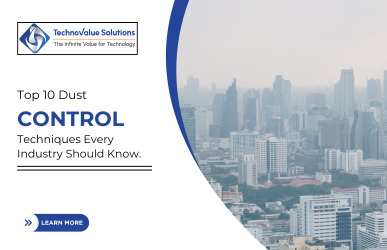
Top 10 Dust Control Techniques Every Industry Should Know
Dust may appear minor, but in industrial settings, it poses serious risks—affecting worker health, damaging equipment, and compromising product quality. In sectors like construction, cleanrooms, manufacturing, and mining, poor dust management can result in regulatory violations, safety concerns, and even fire or explosion risks. Implementing effective dust control techniques is a crucial part of air pollution control and maintaining a safe workplace. Through proper pollution monitoring and prevention strategies, industries can ensure cleaner, safer, and regulation-compliant operations. This blog highlights the top 10 dust control techniques that every industry should implement to efficiently manage particulate emissions.
Water Mist Spray & Misting Systems-
Water spraying and misting are among the most widely used dust suppression techniques, especially for outdoor applications. These systems work by releasing a fine mist or water spray over dusty surfaces, keeping them damp and preventing dust from becoming airborne. This method is particularly effective on unpaved roads, construction sites, and bulk material handling areas. It not only suppresses dust but also improves visibility and safety on the worksite. Automated misting systems can be programmed to activate based on humidity or dust concentration levels, making them both efficient and resource-conscious.
Commercial extractor fans-
Commercial extractor fans are designed to capture dust directly at its source before it spreads into the surrounding environment. These fans use high-efficiency filtration methods to trap dust particles and are commonly used in laboratories, manufacturing facilities, welding stations, and chemical processing lines. By utilizing commercial extractor fans, harmful particles are removed immediately, reducing worker exposure and enhancing indoor air quality. These extractor fan systems play a vital role in regulatory compliance and help industries meet their occupational safety targets effectively.
Dust Suppression Chemicals
When water alone isn’t sufficient or practical, dust suppression chemicals can be applied. These substances bind fine dust particles together, forming a crust or film on surfaces that prevents the dust from becoming airborne.This technique is often used in mining operations, heavy construction sites, and bulk storage areas where long-term dust suppression is needed. Many of these chemicals are environmentally friendly and biodegradable, making them suitable for sensitive areas where water usage must be minimized.
Industrial Vacuum Systems
Industrial vacuum systems are designed to collect dust and debris directly from the source of the operation. These systems are ideal for industries that generate dust during processes such as cutting, sanding, grinding, or material transfer.Unlike standard vacuums, industrial models are built to handle large volumes of fine particulate matter and often feature multi-stage filtration systems. Portable or centralized, they are a key part of good housekeeping and help in maintaining compliance with air quality standards.
Air Filtration Systems
Air filtration systems, especially those utilizing high efficiency particulate air (HEPA) filters or ULPA (Ultra-Low Penetration Air) filters, are vital in environments that require ultra-clean air—such as cleanrooms, electronics manufacturing, and pharmaceutical production.
Enclosures & Containment-
One of the most effective strategies for managing dust in industrial settings is to completely isolate the source of dust generation. By containing or separating the dust-producing processes from the surrounding environment, you can significantly reduce the spread of airborne particles, protecting workers and equipment from exposure. This approach not only improves air quality but also helps maintain cleaner workspaces and ensures compliance with safety regulations. Enclosures and containment systems do just that—by physically separating dusty operations from the rest of the work environment. These can be as simple as plastic sheeting around a sanding station or as complex as sealed containment booths with negative pressure ventilation. By preventing dust from spreading, containment methods protect both workers and equipment in adjacent areas, reducing cleanup and cross-contamination.
Surface Stabilization
Surface stabilization techniques involve treating ground surfaces with materials like gravel, polymers, or binding agents that prevent dust from forming. This is especially useful on access roads, parking lots, and large open areas where frequent traffic kicks up dust.Stabilizing the surface not only controls dust but also improves traction and durability, making it a dual-purpose solution. In areas prone to erosion or dry conditions, this method significantly reduces airborne dust levels with minimal maintenance.
Housekeeping Protocols-
Maintaining regular and disciplined housekeeping practices is one of the simplest, yet most impactful, strategies for controlling dust in any industrial or commercial environment. Consistently cleaning surfaces, floors, and equipment helps prevent the accumulation of dust particles, reducing the chances of them becoming airborne and causing health or operational issues. A well-planned housekeeping routine that includes the use of appropriate cleaning tools and methods, such as damp mopping or vacuuming with HEPA filters, can significantly improve air quality and create a safer, more productive workplace for everyone.
By cleaning work areas frequently- Using damp mops, microfiber cloths, or industrial vacuum cleaners—you can prevent dust accumulation and reduce the risk of it becoming airborne.Good housekeeping practices also support compliance with health and safety regulations and contribute to a more organized, professional workplace. Developing a schedule for daily, weekly, and monthly cleanups ensures dust doesn’t get out of control.
Personal Protective Equipment (PPE)
When other dust control measures aren't enough, Personal Protective Equipment (PPE) becomes the last line of defense. Workers should be equipped with proper respirators, dust masks, safety goggles, and protective clothing to minimize direct exposure to dust.This is particularly important in environments where dust levels can spike unexpectedly, or during maintenance tasks that involve disturbing settled dust. Ensuring workers have access to and are trained to use PPE properly is critical to workplace safety.
Process Modification
Often, the most effective approach to managing dust is to tackle its root cause directly.Process modification involves redesigning workflows, upgrading equipment, or substituting raw materials to reduce dust generation.For example, using pre-mixed materials instead of dry powders, or switching to automated processes that contain dust, can drastically cut down airborne particles. Not only does this improve dust control, but it also often results in more efficient and sustainable operations.
Conclusion
Dust control is more than just a safety precaution—it's a strategic investment that directly impacts your workplace’s efficiency, health standards, safety KPIs, and regulatory compliance. By applying the right mix of these ten techniques, industries can significantly reduce dust exposure, safeguard their workforce, and minimize costly disruptions. Whether you’re overseeing a cleanroom or a construction site, prioritizing dust control helps improve air quality, enhance product integrity, and boost your safety KPIs. Don’t wait—implement effective dust control today and ensure a safer, healthier tomorrow.
#GasMonitoring#ToxicGasDetection#CarbonMonoxideDetector#GasLeakDetector#IndustrialSafety#WorkplaceSafety#H2SMonitoring#VOCDetection#FixedGasDetectors#PortableGasDetectors#PersonalGasMonitors#EnvironmentalHealth#GasDetectionTechnology#ElectrochemicalSensors#InfraredGasSensor
0 notes
Photo




(via Gas Detection Equipment Market Size, Trends, Outlook 2024-2030)
Global market for Gas Detection Equipment is estimated at US$5 billion in 2024 and is projected to reach US$8 billion by 2030 at a CAGR of 8.7% between the two years driven by strict policies regarding workplace and residential safety, and growth in awareness concerning occupational health hazards.
#gasdetectionequipment#gasdetectionequipmentmarket#gasdetectionequipmentdemand#fixedgasdetectors#portablegasdetectors#catalyticbeaddetectors#electrochemicaldetectors#infrareddetectors#semiconductordetectors
0 notes
Text
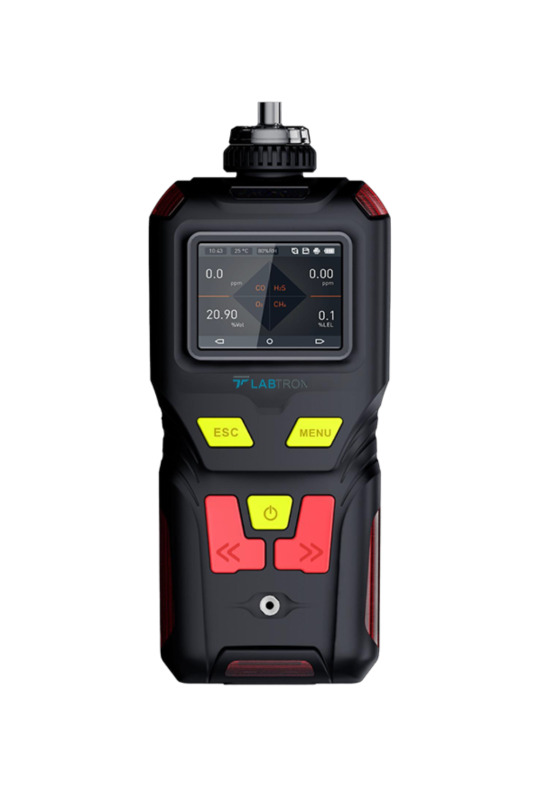
Portable 2 in 1 gas detector LPTG-A11
Labtron Portable 2-in-1 Gas Detector ensures accurate gas concentration measurements with a built-in pump and dual sensors for the simultaneous detection of two gases. Featuring a long probe for narrow spaces, it offers precision and convenience in confined environments.
0 notes
Text
Portable Gas Detector LT-PGD301

Labtro Portable Gas Detector is a four-in-one gas detection alarm that uses diffusion sampling and provides continuous operation for at least 18 hours after a full 4-hour charge. It features sound and vibration alarms, is explosion-proof, and has a special anti-interference PCB design.
0 notes
Text
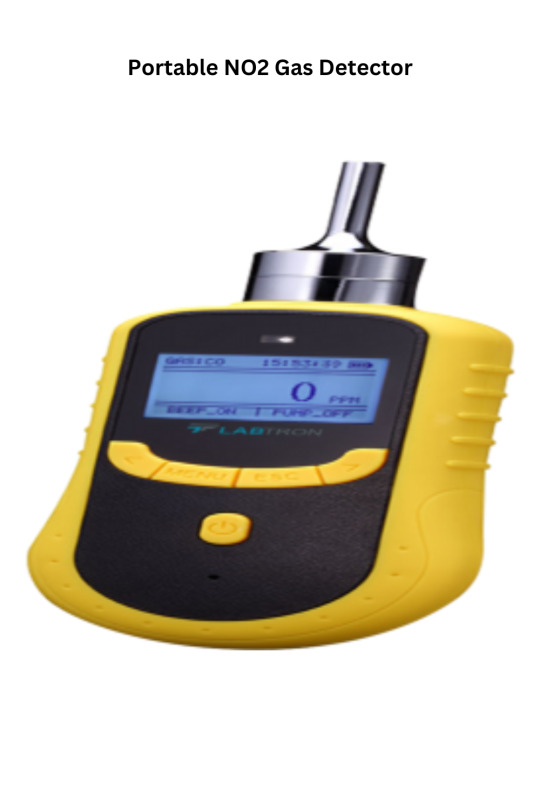
Portable NO2 Gas Detector
Labtron Portable NO₂ Gas Detector offers high accuracy with a measurement range of 0 to 1000 ppm. operates between -20°C and 50°C, uses electrochemical detection, and has an IP66 protection rating. Include a built-in micro sampling pump with 10 suction grades for precise measurement.
0 notes
Text
Kalibrasi Gas Detectors
Shipservices.id experience in Annual Calibration & Certification Including sales ,services of All types (any make/model) of ;
Personal & Portable LEL / Oxygen / H2S & CO Single gas detectors.
Multi Gas Detector
HC/O2 Gas Detector
Tankscope , Explosivmeter
Oxygen Analyzers
Breath Alcohol Analyzers
Fixed Gas Detection System In Pumproom & Accommodation.
For more info, Please contact us :
Whatsapp : (+62)817-000-0589
Email : [email protected]
Site : Shipservices.id

#Kalibrasi gas detectors#MSA#crowcon#Rae#multigasdetectors#portablegasdetectors#rikenkeiki#RKIinstrument#Ballast Tank#Fixedgasdetection#consilium#Rongde
0 notes
Link
Learn about the different roles portable and personal gas sensors play in the workplace.
0 notes
Link
Ambetronics Engineers Pvt Ltd Manufacturer, Exporter, Suppliers, Gas Detector, Gas Leak Detector, Gas Detection System, Portable Gas detector, Flame Detector and IoT Product.
1 note
·
View note
Text
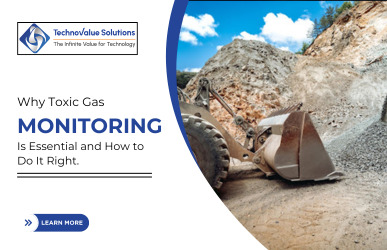
Why Toxic Gas Monitoring Is Essential—and How to Do It Right
Whether you're working in an industrial plant, laboratory, construction site, or enclosed space, the risks posed by toxic gases like carbon monoxide, hydrogen sulfide, or volatile organic compounds (VOCs) are real—and potentially deadly.
That’s why gas monitoring isn’t just a safety measure; it's a critical component of health protection, regulatory compliance, and environmental responsibility. This blog explains why toxic gas monitoring is essential and offers guidance on how to do it right—from choosing the right gas detector to understanding the technologies behind them.
1. The Hidden Dangers of Toxic Gases
Toxic gases can affect human health even at very low concentrations. Brief exposure to toxic gases can cause symptoms such as eye irritation, dizziness, and headaches.
Prolonged or high-level exposure can cause
Neurological damage
Reproductive and developmental disorders
Immune and respiratory system impairment
In extreme cases, unconsciousness or death
Common toxic gases like carbon monoxide (CO), hydrogen sulfide (H₂S), ozone (O₃), nitrogen oxides (NOₓ), and VOCs are often found in workplaces due to industrial processes, fuel combustion, and chemical reactions. This is why installing a carbon monoxide detector in both residential and industrial environments is essential for early warning and protection.
2. Why Monitoring Is Critical
Health & Safety
Gas monitoring helps detect leaks or dangerous build-up early—before they reach harmful or explosive levels. A well-placed gas leak detector provides real-time alerts, giving workers time to evacuate or take corrective actions.
Regulatory Compliance
Workplace safety agencies like OSHA, NIOSH, and EPA require gas detector systems in many industries. Failing to comply can result in:
Hefty fines Legal liability
Shutdowns or loss of operating licenses
Operational Continuity
Accidents caused by undetected gases can halt operations and lead to costly investigations or insurance claims. Gas monitoring helps reduce downtime and protect company reputation.
Environmental Protection
Emissions from toxic gases—including those from natural gas—can damage ecosystems and accelerate climate change. A natural gas detector is essential in environments where methane or other combustible gases may be present.
3. Types of Gas Monitoring Systems
Fixed Gas Detectors
Installed in high-risk areas, these continuously monitor the environment and are ideal for industrial plants and chemical facilities. A fixed gas leak detector system ensures that no dangerous accumulation goes unnoticed.
Portable Gas Detectors
Used by field workers or emergency responders, these handheld gas detectors are great for checking confined spaces or investigating leaks in real time.
Personal Gas Monitors
Worn on clothing, these offer constant protection for workers in hazardous zones like mines, oil rigs, or wastewater plants. These compact gas monitoring devices act like a personal safety shield.
4. How Gas Detection Technologies Work
Gas detectors utilize a variety of sensor technologies, each designed to detect specific hazardous gases with accuracy and reliability.
Electrochemical Gas Sensors: Ideal for detecting carbon monoxide, H₂S, and NO₂ with high accuracy.
Infrared Sensors: Great for measuring hydrocarbons and natural gas. Often integrated into smart gas leak detector systems.
Photoionization Detectors (PIDs): Detect low levels of VOCs and industrial chemicals.
Catalytic Bead Sensors: Effective for flammable gases and often used in natural gas detector devices.
Each type serves different purposes depending on the gas and environment.
5. Best Practices for Effective Monitoring
To implement effective gas monitoring, follow these steps:
Evaluate the environment thoroughly to identify areas at risk for toxic gas exposure and determine potential hazards.
Choose the right type of gas detector for your needs whether fixed, portable, or personal.
Install gas detectors in locations where toxic or combustible gases are most likely to build up, such as confined spaces, near equipment, or low-ventilation areas.
Calibrate and maintain your equipment regularly.
Train staff to understand alerts and respond properly.
Update systems as operations or regulations evolve.
Conclusion
Toxic gases don’t give second chances. They can leak silently, spread quickly, and cause harm before anyone notices. That’s why gas monitoring should be a non-negotiable part of every safety plan.
Whether it’s installing a carbon monoxide detector in residential areas, using a gas leak detector in industrial zones, or setting up a natural gas detector near pipelines—proactive monitoring saves lives. From compliance and environmental protection to operational safety, the benefits are clear.
Invest in the right gas detector today—and protect your people, property, and planet.
#GasMonitoring#ToxicGasDetection#CarbonMonoxideDetector#GasLeakDetector#IndustrialSafety#WorkplaceSafety#H2SMonitoring#VOCDetection#FixedGasDetectors#PortableGasDetectors#PersonalGasMonitors#EnvironmentalHealth#GasDetectionTechnology#ElectrochemicalSensors
0 notes
Video
Portable Gas Detector Repairs & Troubleshooting Services
Multi Gas Detector Repairs & Troubleshooting Services
Personal Gas Detector Repairs & Troubleshooting Services
Single Gas Detector Repairs & Troubleshooting Services
Pocketable Gas Detector Repairs & Troubleshooting Services
Available Workshop Services,On Board Services & On Site Services at Indonesian Area
Business Contact
Email : [email protected]
Whatsapp / Telegram / Mobile : +62 813-70000-879
All types & makers ; Microclip XL Honeywell,BW Technologies,MSA Safety,Riken Keiki,Bosean,Hanwei,etc
#microclipxl#portablegasdetector#multigasdetector#personalgasdetector#pocketablegasdetector#honeywell#rikenkeiki#msa#msasafety#bwtechnologies#bosean#hanwei#gasdetector#gasalarm#safetyequipment#safetyfirst#toxicgas#combustiblegas#rkiinstruments#repair#troubleshoot#calibration#certification
0 notes
Text
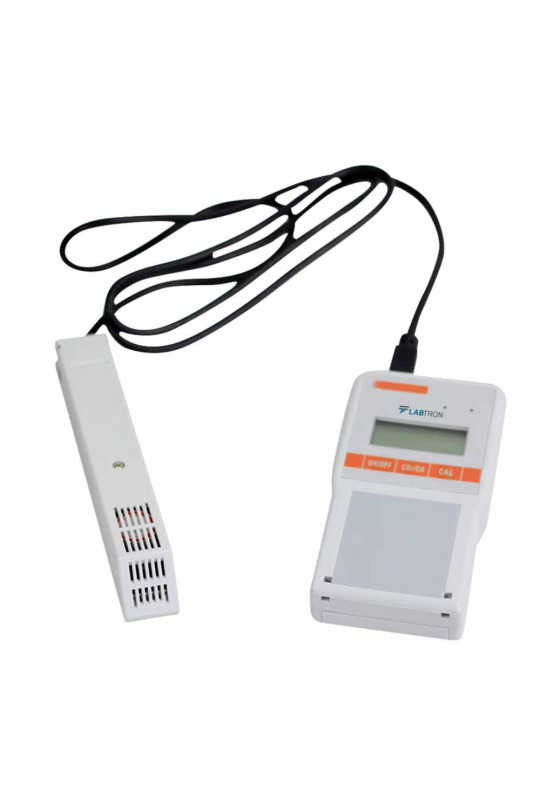
Portable 2 in 1 gas detector LPTG-A10
Labtron Portable 2-in-1 Gas Detector combines precision and portability in a compact, handheld design. It is equipped with dual sensors for simultaneous CO₂ and other gas detection, ensuring reliable and real-time monitoring. Ideal for various industrial and environmental applications.
0 notes
Photo

Are you looking to find out the gas leakage? Here is the best Pen Type Gas Detector for you. Victory Gas Alarm Company invents the most cost-effective Pen Type Gas Detector. This is basically a portable gas detector, is used for pinpointing the combustible gas leakage. To know the detailed specification of this model, please visit at : www.victorygas.com
#pentypegasdetector#gasdetector#gas detection equipment market#victorygas#victorygasalarmcompany#victory#fire safety#gasalarm#safety#security#lifesaver#safetyproducts#portablegasdetector#lifeproducts#life
0 notes
Text
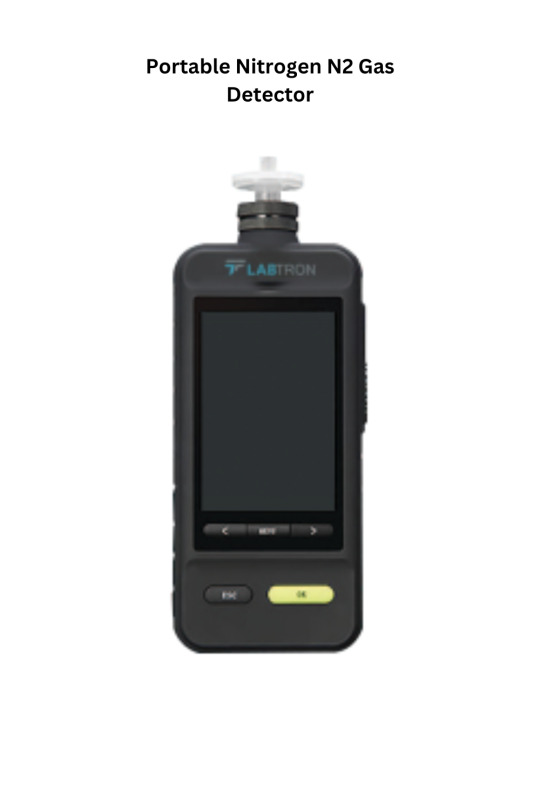
Portable Nitrogen N2 Gas Detector
Labtron Portable Nitrogen N₂ Gas Detector uses electrochemical detection to measure 0-100% VOL. Operating from -20°C to 50°C (optional probe up to 1200°C), it offers adjustable flow rates (0-500 ml/min) and features a mini vacuum pump for stable, precise measurements.
0 notes
Text
Buy Gas Detection Solutions | Personal Gas Monitoring Devices | Contractor Essentials
Contractor Essentials Test Equipment specialises in providing Gas Detector Kits, Calibration Gas and Docks with EXCLUSIVE Contractor pricing. Contractor Essentials specialises in providing Portable Gas Detector Melbourne Kits in Melbourne with EXCLUSIVE Contractor pricing. Products in stock, ready to ship.

#PortableGasDetector#GasPipeTestingEquipment#GasSensorsAustralia#PortableGasDetectionEquipment#DigitalGasDetector#PortableGasMonitoringEquipment#GasDetectorMelbourne#PersonalGasMonitoringDevices
0 notes
Photo

Kalibrasi Inert Gas System, Pump Room Gas Detection & Ballast Tank Gas Sampling
https://www.kalibrasigasdetector.com/2022/01/kalibrasi-inert-gas-system-pump-room
0 notes